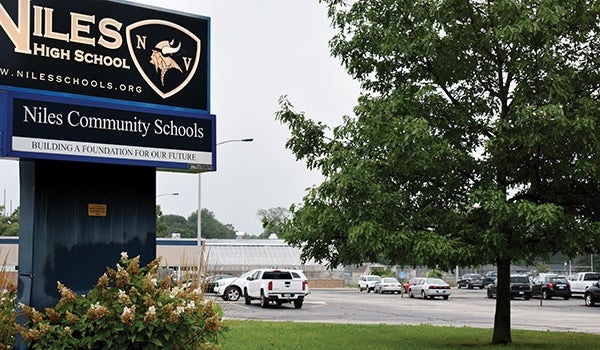Pucker Street Dam removal cost skyrockets
Published 9:19 am Wednesday, December 10, 2014

Removing the Pucker Street Dam will cost the city $3.5 million, up from the original estimate of $1.8 million. City officials have proposed placing a surcharge on kilowatt hours for customers of the city’s electric utility in order to pay for the project.
The Niles City Council received some bad news regarding an ongoing project to remove the deteriorating Pucker Street Dam.
The estimated cost of the project has increased from around $1.8 million to $3.5 million, Utilities Manager Jeff Dunlap told the council Monday during a committee of the whole meeting.
Those involved with the project expect the city to receive about $2 million in grants for it, leaving the city responsible for the remaining $1.5 million.
It is money the city doesn’t have readily available.
“We are between a river and a dam,” said City Administrator Ric Huff.
To pay for the extra cost, Dunlap is recommending that the city create a surcharge on energy usage specifically restricted to the decommissioning of the now defunct hydroelectric dam.
Placing a $0.0025 cent (1/4 of one cent) per kilowatt-hour surcharge on retail electric sales would generate approximately $300,000 a year. Dunlap anticipates the surcharge would be needed for at least five years with the grant monies covering the balance. The charge would be removed once the project is complete.
“If we get more grant money, that will reduce the length of the surcharge,” Dunlap said.
How much will it cost customers of the city’s electric utility?
According to Dunlap, the average electric utility customer uses about 1,000 kilowatt-hours of electricity per month. A customer using that amount of electricity would have a $2.50 surcharge per month.
Dunlap explained why the cost to remove the dam nearly doubled from original estimates.
He said the amount of sediment that built up behind the dam over the last 130 years is beyond what was originally anticipated, meaning it will cost more to remove and manage the sediment.
Another problem, he said, is that the Pucker Street Bridge, located upstream of the dam, would become structurally unstable if the dam is removed. Early planning and design concepts indicated that there would be no impact to the bridge.
Correcting those structural problems will cost north of $500,000, according to estimates.
The city has already secured $850,000 in grants for the removal of the dam, according to Marcy Colclough, senior planner with Southwest Michigan Planning Commission. Several other grants are pending.
Colclough said while the project is doing well in terms of attracting grant money, it is important for the city to begin work on the dam’s removal in order to help secure additional grants.
“If we can point to that progress they will feel more secure about giving money to the city,” she said.
The council took no action regarding the dam removal or the proposed electric surcharge.
“I’d like for the council to have an opportunity to review all this data and think about it,” said Mayor Mike McCauslin.
The city has owned the dam since 1894. It produced hydroelectricity for more than 60 years until 1993 due to ongoing maintenance issues that became too expense to fix.
The city council decided to remove the dam in 2013 after concluding it was too expensive for it to be restored. Original estimates for its restoration were around $3.5 million in 2009.
Dunlap said even if the dam were restored, it would cost more for the city to produce power with the dam than it would to purchase power from AEP.






